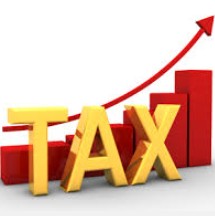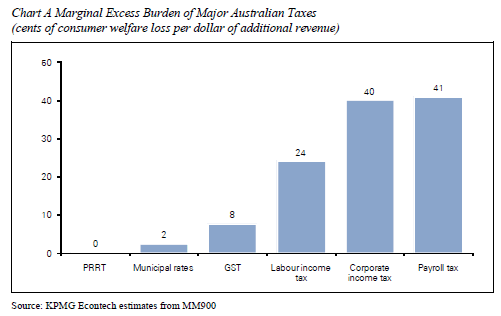
People earning up to $80,000 will soon face tax rates of up to 40 per cent unless the government addresses bracket creep…
“With bracket creep you are going to have a large number of working Australians worse off,” PwC managing partner tax Tom Seymour said.
“They will have less real income to spend on food, education, health and housing as inflation goes up”…
“GST has got to be on the table, superannuation has got to be on the table, mining taxes have to be on the table”.
Arguments like PwC’s above have gained increasing prominence recently. A few weeks back, Treasury Secretary, Martin Parkinson, claimed that the typical full-time employee would be paying tax of 39¢ in the dollar by 2015-16, up from 31¢ in the dollar. He also noted that:
Continued increases in the personal income tax burden will hit lower and middle income earners with higher marginal and average tax rates. This will have adverse labour force participation impacts, while sharpening incentives for tax minimisation by higher income earners.
Meanwhile, earlier this month, the University of Canberra National Centre for Social and Economic Modelling released analysis showing that in the absence of tax cuts, “bracket creep” would increase total personal income taxes by 21% or $32.5 billion within a decade.
While a common complaint against raising or broadening the GST is that it is regressive – i.e. it would hit lower income earners harder than upper income earners, since they tend to spend a higher proportion of their incomes – the same could be said for allowing income taxes to rise via bracket creep, as illustrated recently by Ross Gittins:
The average full-time wage next financial year, 2014-15, will be about $76,000. On the basis of reasonable assumptions about the growth in wages over the three years to 2017-18, you can calculate that someone on half the average wage would see the proportion of their wage that they lose in tax increase by 3.5 cents in the dollar.
For someone on the average wage the increase would be 2 cents in the dollar. On twice the average wage it’s 1.1 cents. And on six times the average wage it’s 0.8 cents.
Now that’s regressive.
The key difference is that GST is far more efficient than income taxes and causes less distortions across the economy. Indeed, the Henry Tax Review estimated that the “marginal excess burden” (the loss in consumer welfare relative to the net gain in government revenue) of the GST was only 8%, since it is broadly applied, is difficult to avoid, and does not significantly distort behaviour.By contrast, income taxes on labour create a marginal excess burden of 24% – three times the amount – because they can discourage work (see next chart).
This is why tax experts, like Professor John Freebairn, has recommended shifting the tax base from income taxes to indirect taxes, noting that “changing the tax mix from (income taxes to indirect taxes) brings gains of 20c to 30c in the dollar and beats anything that a major corporation could do on productivity”.
Clearly, there are compelling reasons to raise the GST (or broaden its base) on Budget sustainability grounds, to reduce the tax burden on the shrinking working-aged population, and to improve efficiency and productivity.
That said, the Government should also look to raise taxes through broad-based land taxes and resource rent taxes. While not shown in the chart above, both taxes would have similar efficiency to the Petroleum Resource Rent Tax (PRRT) and Municipal rates, since they would be applied to a tax base that is completely immobile – land. They are also more equitable than either consumption taxes or income taxes.
A broad-based land tax would also have more favourable distributional impacts than the GST, and would effectively boost land supply and help make infrastructure investment self-financing for governments.
Any discussions on tax reform should, therefore, include implementing taxes on land/resources alongside raising/broadening the GST, in place of less efficient and/or inequitable sources.


